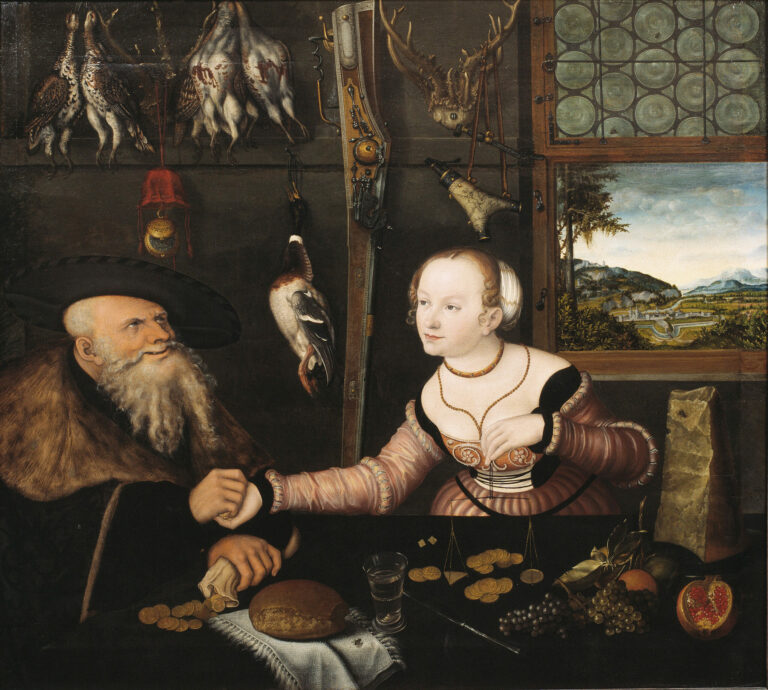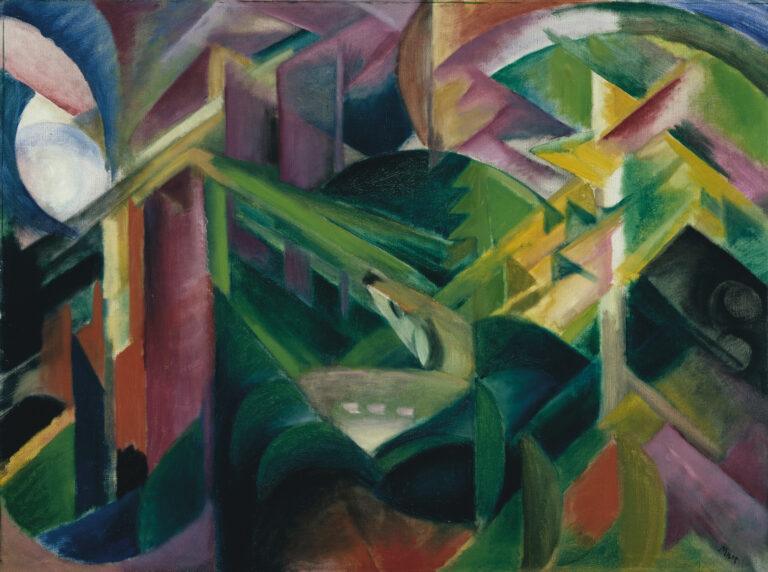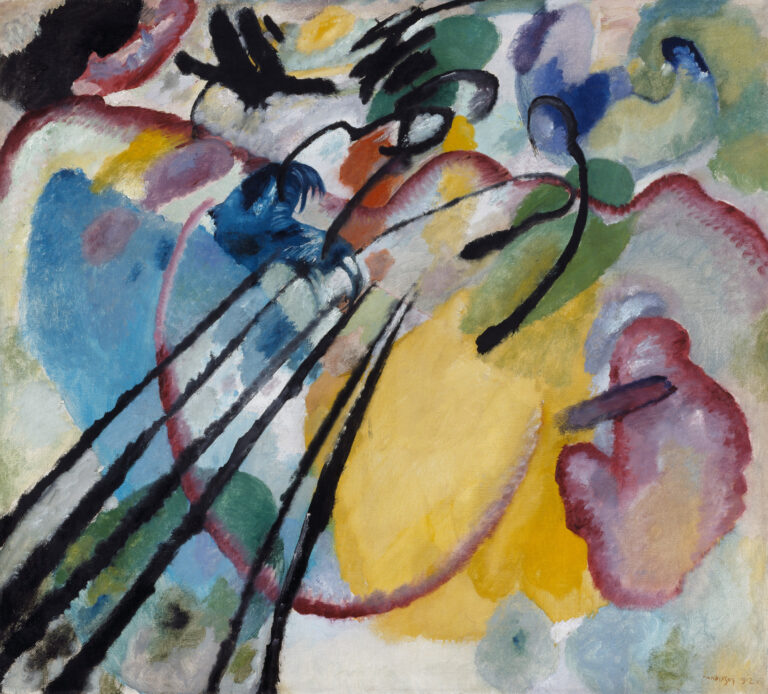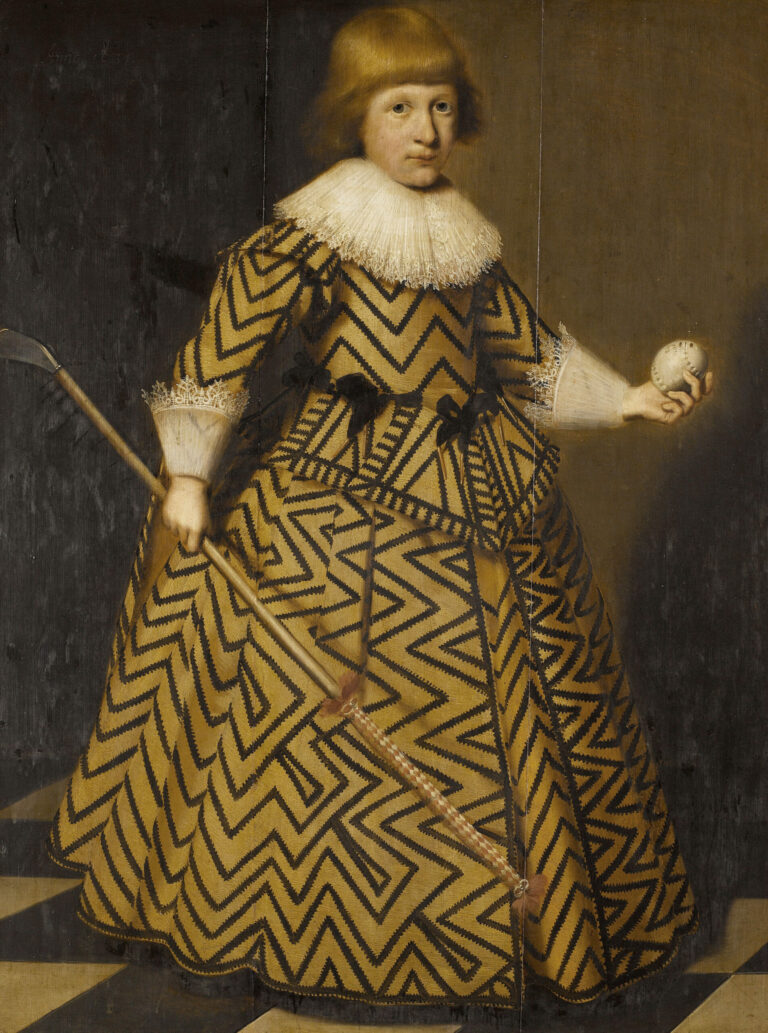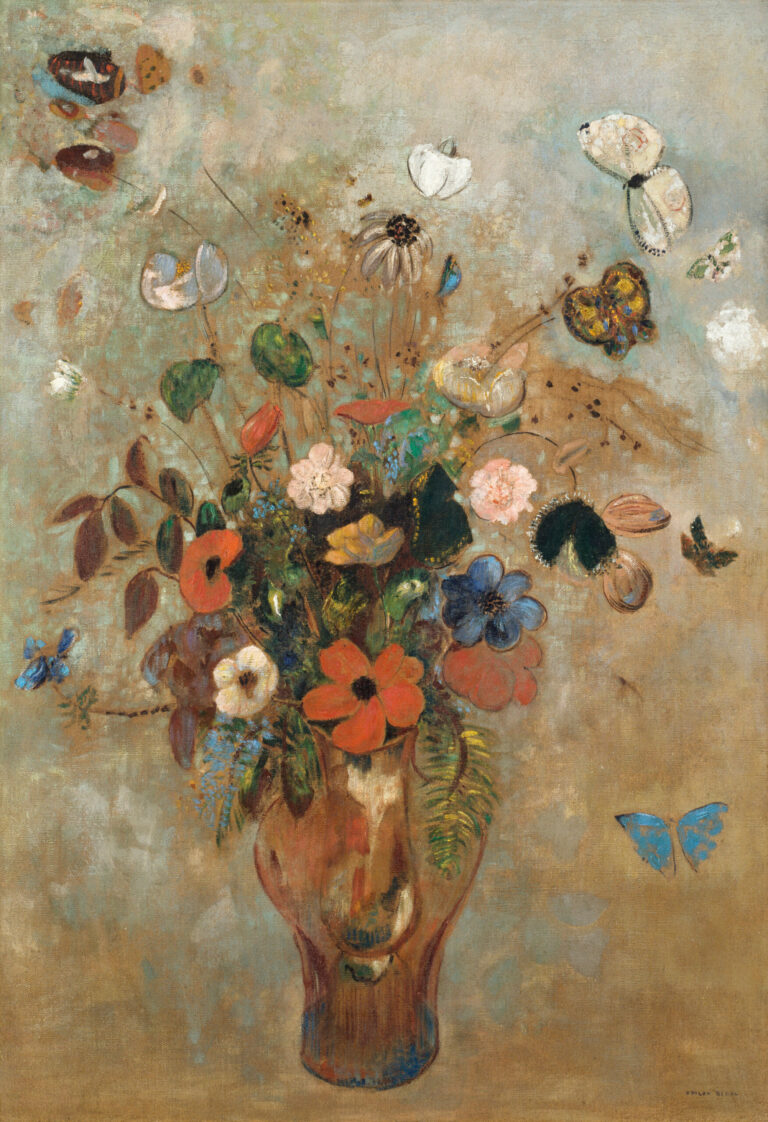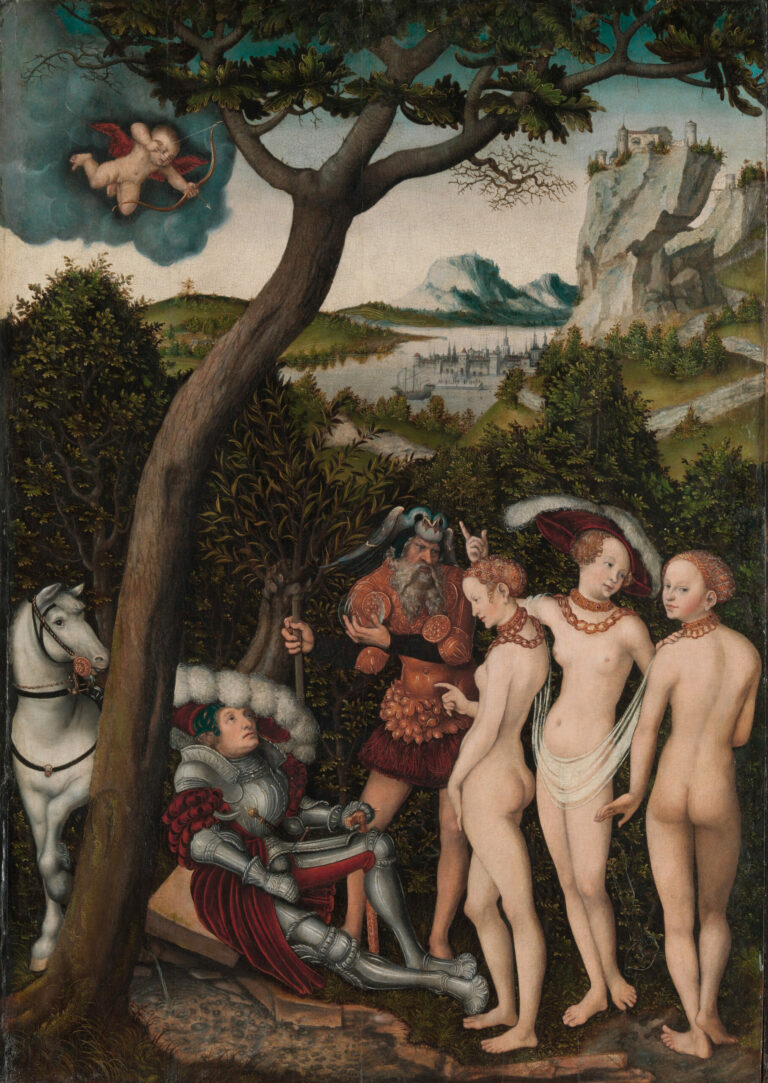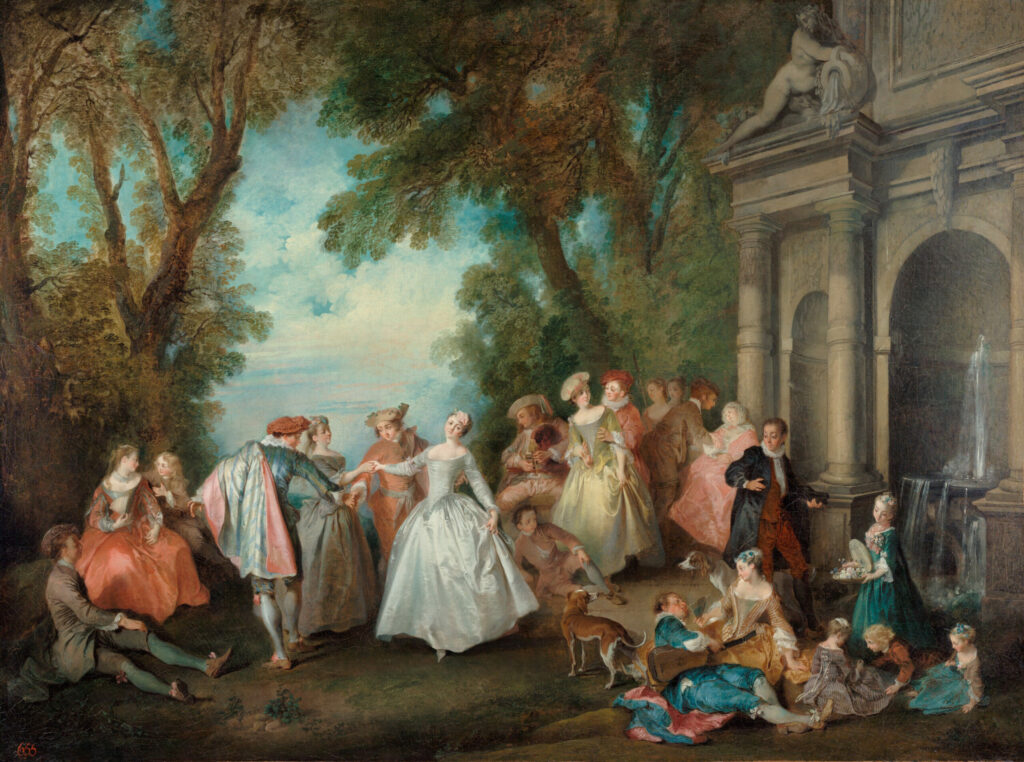
Paris, 1720s. In the gardens, a new form of entertainment captivates high society. Lancret captures on canvas these moments when the nobility abandons itself to pastoral pleasures. Beneath majestic foliage, the dance begins.
An Orchestrated Scene of Seduction
At the center of the composition, two couples whirl to the sound of bagpipes. The woman in the white dress, pivoting gracefully, draws all eyes. Around them, figures unfold in multiple vignettes. Near the fountain adorned with a statue, other characters whisper, draw closer, touch. The shimmering fabrics—pink satins, blue silks, golden brocades—catch the light. Lancret’s fluid brushwork caresses these luxurious textiles, creating shifting reflections. The neoclassical architecture of the fountain structures the space.
The Invention of the Fête Galante
Lancret perpetuates here a new genre born in the early eighteenth century: the fête galante. These elegant pastoral scenes embody an ideal of refined carefree pleasure. Far from the rigid etiquette of Versailles, the figures celebrate earthly pleasures and the art of seduction. This pastoral entertainment reflects an aspiration to measured freedom, where social conventions soften without disappearing. The imposing dimensions of the painting suggest a prestigious commission, probably intended to adorn the salon of a patron or collector.
Lancret, Master of the Fêtes Galantes
Nicolas Lancret (1690-1743), trained in Gillot’s studio then inspired by Watteau, became one of the masters of the fête galante. Admitted to the Royal Academy in 1719, he achieved considerable success with the Parisian aristocracy. His style combines naturalistic observation and theatrical poetry.
💭 Observe these figures suspended outside of time. Imagine their music, their laughter, their whispered secrets. What dreams do we cultivate today to escape our own social conventions?
Further information
- Title: Dance Before a Fountain Artist: Nicolas Lancret (1690-1743)
- Date: circa 1724
- Medium: oil on canvas
- Dimensions: 97.8 × 130.8 cm (38 1/2 × 51 1/2 in.)
- Museum: The J. Paul Getty Museum, Los Angeles
- Link: View the work on the Getty Museum website

